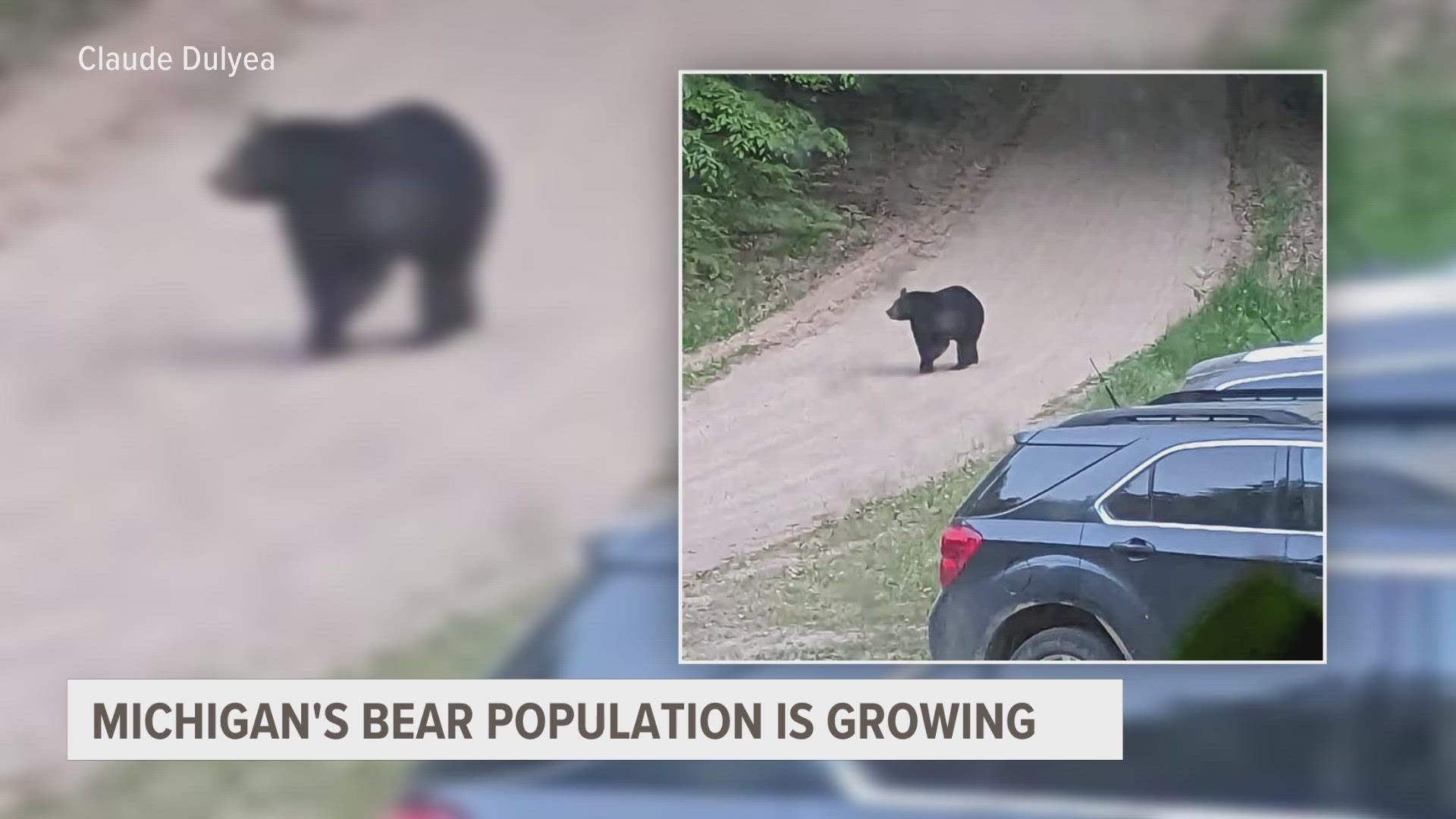MICHIGAN, USA — Black bear sightings in West Michigan are rare, but certainly not impossible.
13 ON YOUR SIDE received reports of potential bear cub sightings in Spring Lake, so we did some digging.
To get to the bottom of things, we reached out to Rachel Lincoln, the wildlife outreach coordinator for the Department of Natural Resources Wildlife Division.
Lincoln said she spoke with the local county wildlife biologists and technicians in Spring Lake about a potential bear cub sighting in the area and they had not received any confirmation of it.
However, she said there's a very healthy bear population in the northern part of Michigan's lower peninsula.
According to Lincoln, there are currently around 2,500 black bears living in Michigan, which is about a 55% increase since 2012.
What's interesting, she said, is that the population's distribution is also increasing.
She said the black bears used to be primarily in the northeastern portion of the lower peninsula. However, over the last 10 years, they've begun to sprawl over to the northwestern side for about a 70% increase in distribution.
This has led to there being more bears in the Traverse City, Gaylord and Cadillac areas than in the past. Due to how much forest area there is for them to live in, the people living there usually only see them once or twice, and sightings are still relatively uncommon.
She said the bears tend to travel along watersheds and waterways, and it's in the bears' natural behavior, particularly young male bears, to follow them farther south to find a new place to live.
Lincoln said due to this, every once in a while there are black bear sightings in areas like Grand Rapids when the bears move farther south into west Michigan.
She said the farthest south they know of bears being is in Newaygo, where there are breeding female black bears with cubs.
If you do spot a bear, Lincoln said they're very shy animals by nature and the best thing to do is remain calm and make sure it has a clear pathway to run.
"When faced with humans in the fight or flight response, they're almost always going to flee if they feel like they've got the opportunity to do so," Lincoln said. "So just remain calm. You want to make yourself seem big, and that's really just to alert the bear that you are in the area."
She said making yourself big and making a lot of noise along with giving the bear space to run is the best option for keeping yourself safe.
Lincoln said it's recommended that people in areas on the northern side of Grand Rapids take down their bird feeders, as that can be an attractive food source to bears while the seasons change.
However, bears will be on the hunt for calories, and according to Lincoln the average bird feeder has around 19,000 of them.
Once the bear eats from the bird feeder, it could move to the trash, then get even braver and try to find food near the home.
She said once the plants and trees begin fruiting and insects begin hatching there will be ample food sources and the feeders are safe to put back up.
Lincoln said if you do have a bear sighting, there isn't really any action the department could take to move the bears, as it's likely that if there are young bears they'll move north at some point.
However, if there are bear cubs spotted in areas south of Newaygo County and there's photo evidence, she asked the public to let the DNR know through email at wildlife@michigan.gov so it can be recorded.
►Make it easy to keep up to date with more stories like this. Download the 13 ON YOUR SIDE app now.
Have a news tip? Email news@13onyourside.com, visit our Facebook page or Twitter. Subscribe to our YouTube channel.
Watch 13 ON YOUR SIDE for free on Roku, Amazon Fire TV Stick, Apple TV and on your phone.

